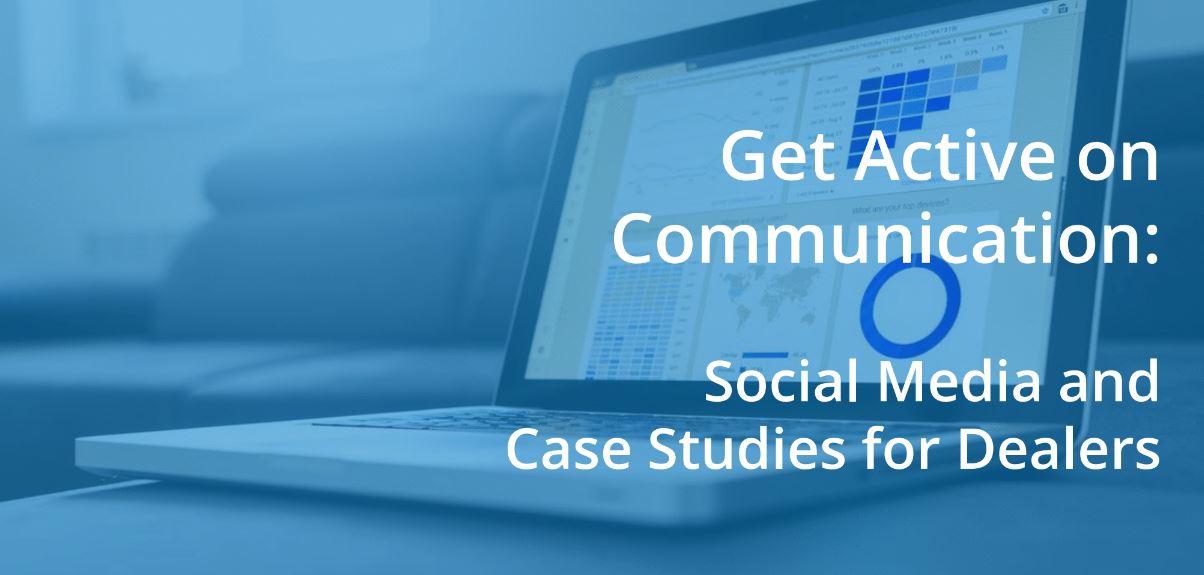
Social Media and Case Studies for Dealers: A Q+A with Caster from the AVNation #LFHSummit
This past week, the Caster Crew had pleasure of joining the first residential AVNation LFH Summit. We joined #AVTweeps from around the country and many of our clients who presented from home at this virtual event that offered education, trainings, and networking events for the residential custom install industry.
The Caster Crew shared some of our own expertise on social media and case study best practices tuned specially for dealers and integrators. While we’re working from home, many of us have extra time to learn new hobbies; some of us are baking bread, landscaping, or taking on art projects, and Caster recommends this as a time for dealers to up their social media and case study game.
Our Alex Crabb, Pete Girard, and Laura Shubel presented helpful tips and answered some FAQs:
How do we know what hashtags are effective to use on Instagram and Facebook?
The Caster team doesn’t recommend using hashtags on Facebook, but they’re great for Twitter, LinkedIn, and Instagram.
To find relevant hashtags, you can do a general search on each platform. Start with keywords that are relevant to your industry, for example, home theater or audio/video, the more broad the better, to reach a wider audience. When you search these hashtags, you can scope out what other hashtags top posters are using and add it to your list. Integrators can also look at the social media profiles of manufacturers they work with for inspiration.
What do you recommend when your company has bad reviews from people who are not customers?
Online reviews can show on a business’s Google page, and commonly on Facebook, or even as an impromptu comment to a Tweet or Instagram post. Good or bad, we recommend responding to all reviews. When potential customers are looking at your reviews, they want to see that you are responsive and helpful – an ignored review can make your business seem unhelpful and unresponsive.
When responding to reviews, honesty, politeness, and clear communication are key. Respond to the review and address the person’s concerns and ask how you can help to solve the issue in private message via phone or email. If the review is coming from someone that you can’t find in your database, you should explain that you are aren’t sure when you worked with the person but would be happy to chat further to solve the issue or answer the question.
For those not using social media scheduling tools, is there a best practice for how content should be pushed?
When it comes to creating a social media presence for your company, the Caster team highly recommends the use of a scheduling tool. Especially if you’re new to social media, scheduling in advance can help condense the amount of time you spend writing posts, and can help you keep your program running (even once COVID-19 dies down and we get to a new business-as-usual).
Drafting social media content in real time each day can take a lot of time. There are scheduling platforms like TweetDeck, Hootsuite, and Sprout Social that offer free trials so you can see which works best for your brand and your employees, and Facebook has a built-in publishing tool. If managing multiple different social media platforms is taking up too much time, we suggest evaluating which social profile(s) are working the best for you, and either cutting back the amount of profiles you’re maintaining or investing in one good scheduling tool.
It’s better to do social media well in one place than to try to be everywhere, poorly.
What is your take on spending money to boost posts on Instagram and Facebook? Is it worth it?
If you’ve managed a Facebook or Instagram business account, you’ve likely seen the option to boost a post here and there. It’s tempting, and easy, to just click a button to get more post views, but we don’t recommend it.
Boosting posts here and there won’t bring as much value as creating a small campaign or planning a set of goals to accomplish with the spend. It can be small, like driving traffic to your website or gaining likes, but we recommend driving the decisions and goals in a plan upfront, rather than just pushing posts as Facebook prompts you to.
For example, if you want to promote outdoor installations, you should plan a small campaign, define goals, and target an audience. These practices can make the most out of your ad dollars.
What is the best way to use social media to promote that you will be a guest on a podcast?
To promote guest-starring on a podcast, or AVNation’s LFHSummit, speaking at events, etc., use general social media engagement best practices. Start by finding the hashtags of the audience and the event, and the key players to engage like organizations, brands, podcast host, other speakers, etc.
Create a schedule to promote the event – think: before, during, and after. As the event approaches, plan to promote across social platforms including the date, time, and venue. You could start as soon as a month out, and follow up each week, the day before, etc. On the day of the event or podcast, share what you’re doing, maybe a photo. Follow up afterward, continuing the discussion with attendees, engaging with people who commented, or maybe share the podcast link for more people to listen. When you tag relevant people/publications in your post, the other people involved in the event can share your post across their social platforms.
The Caster Crew is excited to share this feedback with you from our presentation. This week, we will be presenting about social media and case studies for integrators at the AVNation Commercial Learn From Home Summit! Do you have more questions for us? Tune in on Wednesday, April 15 at 11 a.m. ET or tweet us at @CasterComm!
